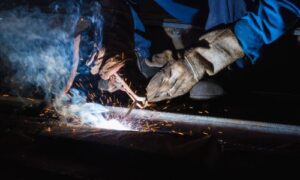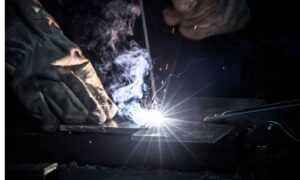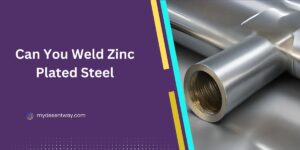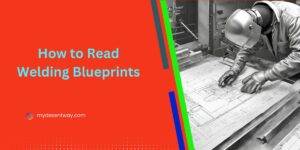Table of Contents
Curious about JB Weld’s dry time? Dive in! How Long Does JB Weld Take to Dry? Whether you’re a pro or a newbie, nailing down the drying time can make or break your project. Let’s unravel the mysteries, speed up the process, and answer your burning questions!
2. Drying Process: Chemical Composition and Influencing Factors
JB Weld’s remarkable bonding ability stems from its unique chemical composition, a blend of resin and hardener. When these two components combine, they initiate a chemical reaction crucial for the adhesive’s strength. This reaction leads to the curing process, where the mixture transforms from a liquid state into a solid, durable bond.
The drying time of JB Weld hinges on various influencing factors. Temperature and humidity stand as primary influencers. Warmer temperatures accelerate the curing process, while higher humidity might prolong it. Additionally, the surface where JB Weld is applied plays a pivotal role. A clean, dry, and properly prepared surface allows for optimal adhesion and quicker drying.
Understanding this chemical interaction and its environmental dependencies empowers users to effectively anticipate and manage JB Weld’s drying time. Whether working in a chilly garage or a humid environment, grasping these factors ensures optimal project results.
3. How Long Does JB Weld Take to Dry
Types and Drying Times
JB Weld offers a range of specialized products, each tailored for specific applications, and consequently, they come with varying drying times.
JB Weld KwikWeld
- Initial Set Time: 4-6 minutes
- Cure Time: 4-6 hours
JB Weld ClearWeld
- Initial Set Time: 5 minutes
- Cure Time: 1 hour
SteelStik
This variant of JB Weld is designed explicitly for metal repairs, offering a rapid setting time of about 5 minutes. It’s a go-to choice for quick fixes on steel, iron, and other metallic surfaces. However, complete curing may take an hour, depending on environmental conditions.
Original Cold Weld Formula
The classic JB Weld formula is known for its versatility and robust bonding. It typically sets in 4-6 hours, providing ample time for adjustments before reaching a complete cure in 15-24 hours. This version is ideal for various materials, making it a staple in many toolboxes.
WaterWeld
WaterWeld, as the name suggests, specializes in repairs involving water exposure or underwater applications. Its drying time mirrors the Original Cold Weld Formula, setting in 20-25 minutes and achieving a complete cure within an hour. This quick-setting epoxy is a reliable solution for plumbing emergencies and fixes in damp environments.
Understanding the distinct drying times of these JB Weld variants is crucial when selecting the right product for your specific project needs. Whether you require rapid repairs or have the luxury of time for a more comprehensive cure, choosing the appropriate type ensures optimal results in your endeavors.
4. Drying Duration: Application and Curing Times, Tips for Quicker Drying
Application and Curing Times
JB Weld’s application and curing times are pivotal for achieving optimal results. When applying JB Weld, ensure the surface is clean, dry, and contaminant-free. Mixing equal parts of the resin and hardener initiates the curing process, and the application thickness plays a significant role. Thinner layers tend to dry faster compared to thicker applications.
Generally, JB Weld sets in 4-6 hours, providing a workable time window for adjustments before it reaches its complete cure in 15-24 hours. However, these times can vary based on environmental conditions and the specific JB Weld variant used.
Tips for Quicker Drying
Several strategies can expedite JB Weld’s drying process:
- Optimal Temperature: Working in warmer conditions accelerates the curing process. Aim for temperatures around 50-90°F (10-32°C) for optimal results.
- Reducing Humidity: Lower humidity levels help JB Weld dry faster. Working in a drier environment or using a dehumidifier can aid in quicker curing.
- Thinner Applications: Applying thinner layers of JB Weld promotes faster drying. Avoid overly thick layers, which can extend drying times.
- Surface Preparation: Ensure the surface is cleaned and roughened for better adhesion. A well-prepared surface facilitates quicker drying and stronger bonding.
By incorporating these tips into your application process, you can significantly reduce JB Weld’s drying time, enabling quicker completion of your projects without compromising on strength and durability.
5. Common Myths and Misconceptions
Myth: Instantaneous Drying
One prevailing misconception about JB Weld is the belief in its instantaneous drying. Contrary to this myth, JB Weld does not dry instantly. While it sets relatively quickly, achieving its complete cure requires time. This misconception often leads to unrealistic expectations and hasty adjustments that can compromise the bond’s strength.
Myth: One-Size-Fits-All Cure Time
Another misconception revolves around assuming a uniform curing time for all JB Weld products. Each variant comes with its specific drying and curing times. Assuming that all JB Weld types follow the same timeline can lead to improper application or premature handling, affecting the overall effectiveness of the bond.
Myth: Ignoring Environmental Factors
Many users overlook the impact of environmental factors on JB Weld’s drying time. Temperature, humidity, and surface preparation significantly influence the adhesive’s performance. Disregarding these factors might lead to prolonged drying or weak adhesion, deviating from the anticipated outcomes.
Myth: No Room for Adjustments
Some believe that once applied, JB Weld offers no room for adjustments. Contrarily, while the initial setting phase begins quickly, there’s a window before it achieves its cure. This flexibility allows minor adjustments or alignments before the epoxy fully sets.
Myth: Immediate Load-Bearing Capability
There’s a misconception that JB Weld becomes immediately load-bearing once applied. While it does create a strong bond, it’s essential to allow the recommended curing time for the adhesive to reach its maximum strength before subjecting it to heavy loads or stress.
By dispelling these myths and misconceptions, users gain a more realistic understanding of JB Weld’s capabilities and drying process. Setting accurate expectations ensures better utilization of this versatile adhesive for various projects, leading to more substantial and reliable results.
6. Factors Affecting Time
Understanding the intricate variables influencing JB Weld’s drying time is essential for successful applications.
Temperature and Humidity
Temperature and humidity play pivotal roles in the curing process. Warmer temperatures generally expedite the drying of JB Weld, while higher humidity levels might extend the drying time. Working in environments with optimal temperatures, typically between 50-90°F (10-32°C), ensures a more efficient curing process.
Thickness of Application
The thickness of the applied JB Weld layer significantly impacts drying time. Thinner layers tend to dry faster compared to thicker applications. Applying excessively thick layers prolongs the drying process and may compromise the bond’s strength.
Surface Preparation
Properly preparing the surface before applying JB Weld is crucial. A clean, dry, well-prepped surface ensures better adhesion and faster drying. Roughening the surface using sandpaper or cleaning it thoroughly with appropriate solvents enhances the bond’s effectiveness and expedites drying.
Environmental Conditions
Environmental conditions beyond temperature and humidity also influence drying time. Factors such as air circulation, altitude, and exposure to sunlight can affect the curing process. Ensuring an environment conducive to quicker drying, such as good airflow and adequate ventilation, can positively impact JB Weld’s performance.
By considering and managing these factors effectively, users can optimize the drying time of JB Weld, ensuring stronger adhesion and quicker completion of projects. Adjusting environmental variables and application techniques in line with these considerations can significantly enhance the overall outcomes of using JB Weld for various applications.
7. Practical Applications: Real-World Uses and Recommendations
Household Repairs
JB Weld has extensive use in household repairs, from fixing broken ceramics to patching up metal objects. Its versatility makes it indispensable for repairing various household items, from plumbing fixtures to kitchen appliances. Whether sealing leaks or bonding broken parts, JB Weld offers a reliable solution.
Automotive Fixes
In the automotive world, JB Weld is a savior for numerous repairs. It’s a go-to product for mechanics and car enthusiasts, from patching exhaust systems to fixing engine components. Its ability to withstand high temperatures and harsh conditions makes it invaluable in addressing various automotive issues.
DIY Projects
Enthusiasts engaged in DIY projects benefit significantly from JB Weld. It aids in creating durable bonds between different materials, allowing for innovative projects to take shape. Whether constructing new items or repairing old ones, JB Weld provides a sturdy, long-lasting solution.
Marine Applications
WaterWeld, a variant designed specifically for underwater repairs, finds extensive use in marine applications. From fixing leaks in boat hulls to repairing submerged equipment, its ability to set and cure underwater makes it a crucial tool for boat owners and marine enthusiasts.
Recommendations
For optimal results with JB Weld, follow these recommendations:
- Surface Preparation: Ensure surfaces are clean, dry, and roughened for maximum adhesion.
- Proportional Mixing: Follow the recommended mixing ratios for the resin and hardener to ensure a proper chemical reaction.
- Application Technique: Apply in thin, even layers for faster drying and stronger bonds.
- Environmental Considerations: Work in environments with suitable temperatures and humidity levels for quicker curing.
- Curing Time: Allow JB Weld the recommended curing time for maximum strength before subjecting it to stress or loads.
By incorporating JB Weld into your projects with these recommendations, you can achieve durable, reliable bonds suitable for various applications, ensuring lasting results.
Conclusion
And there you have it, folks! The mystery of how long JB Weld takes to dry has been unveiled. Remember, whether you’re tackling a quick fix with JB Weld KwikWeld or opting for the robust bond of JB Weld Original, patience is key. So, arm yourself with knowledge, prepare your materials, and let JB Weld work its magic. Before you know it, your project will be as good as new!
FAQs
Does JB Weld work on plastic?
Absolutely! JB Weld offers dedicated products like JB Weld Plastic Bonder, explicitly designed for bonding plastic surfaces. It provides a solid and long-lasting bond.
What is the strongest JB Weld for metal?
For metal bonding, JB Weld SteelStik and JB Weld Original Cold Weld Epoxy Adhesive are renowned for their exceptional strength and reliability.
Does JB Weld need air to cure?
JB Weld cures through a chemical reaction, so it doesn’t necessarily require air. However, proper ventilation during drying can help remove any lingering odors.
Can I speed up JB Weld’s cure time?
You can speed up the cure time by following the earlier tips, such as increasing the temperature and using thinner applications.
How long does JB Weld need to cure?
JB Weld typically reaches its maximum strength in 15-24 hours. However, it’s best to wait for a total 24 hours before subjecting the bond to heavy loads or stress.











7 thoughts on “How Long Does JB Weld Take to Dry?”